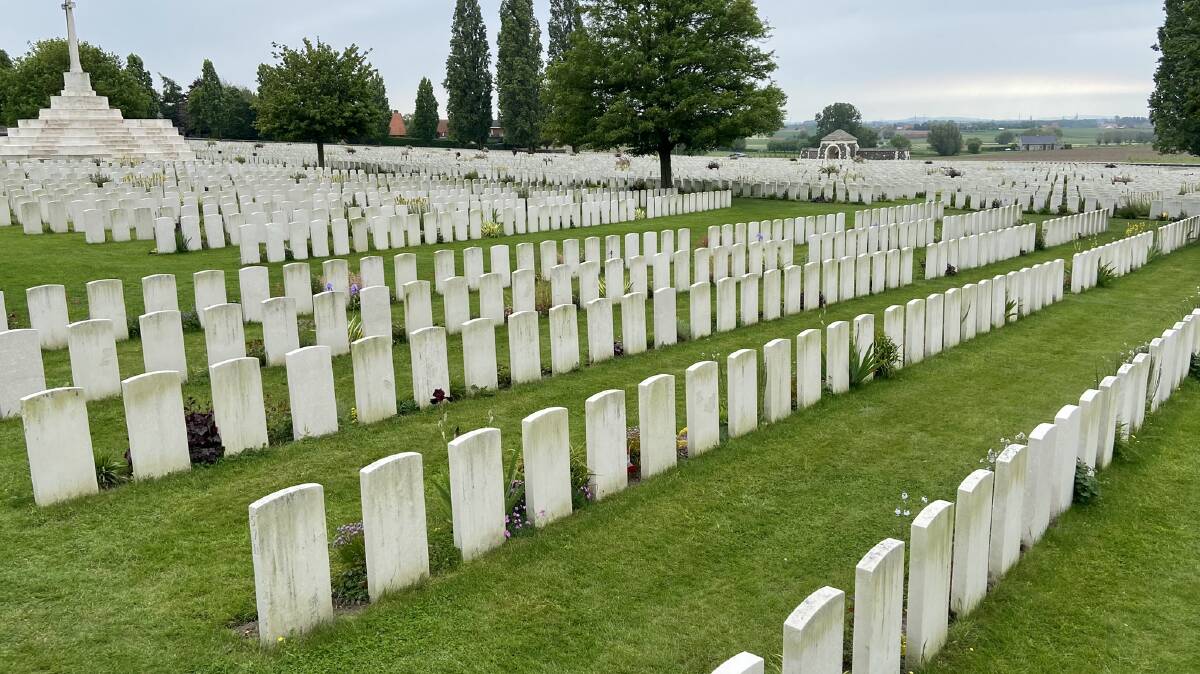The location on which famous war poem On Flanders Fields was penned and the world's largest Commonwealth cemetery are among Western Front sites added to UNESCO's World Heritage List.
Create a free account to read this article
or signup to continue reading
A total of 27 Flanders cemeteries and monuments are among the 139 Western Front sites added to the list, along with 16 sites in Wallonia and 96 in France.
The additions were announced at the annual meeting of the World Heritage Committee in Riyadh, Saudi Arabia on September 20.
Each site serves as a powerful symbol of reconciliation and equality, honouring every soldier who fell on the front, irrespective of their origins.
Flemish Tourism Minister Zuhal Demir said Flanders' World War I history was a popular reason for tourists to visit.
"We hope this will encourage and inspire tourists to discover and investigate the unique heritage of this Western region of Flanders," he said.

Flanders sites that were added include:
- The Menin Gate: A towering gate to the city of Ypres which commemorates Commonwealth soldiers who died in and around the Ypres Salient. Nearly 55,000 names of soldiers who have no known grave are inscribed on its name panels. Every night at 8pm a special Last Post ceremony is held at the Gate.
- Tyne Cot Cemetery and Tyne Cot Memorial to the missing: Located in Zonnebeke, Tyne Cot is the resting place of almost 12,000 Commonwealth soldiers, making it the largest Commonwealth cemetery in the world. At the rear of the cemetery is a curved Memorial to the Missing, commemorating 35,000 soldiers who have no known graves.
- Polygon Wood Cemetery and Buttes New British Cemetery: Located on the site of a large wood which was destroyed in the war. The centre of the wood housed a dominating mound called the Butte, which had been fortified by the Germans and used as an observation post. Despite heavy resistance, Australian soldiers took the Butte and successfully secured the wood on September 26, 1917, suffering significant casualties in the process. After the war the 5th Australian Division built its divisional memorial on the Butte. The towering obelisk overlooks CWGC Buttes New British Cemetery where more than 650 Australian soldiers are commemorated. Each year on Anzac Day a special Dawn Service is held, commemorating the efforts of the Anzacs.
- Essex Farm Cemetery: Lieutenant-Colonel John McCrae of the Canadian Army Medical Corps wrote his famous poem In Flanders Fields on the location of this Commonwealth cemetery in May, 1915, expressing his anguish and sense of loss over the death of a friend.
- The Crypt Yser Tower: Located in the Belgian town of Diksmuide, the tower is the tallest peace monument in Europe. It houses a WWI museum in the panoramic room of the tower and a chapel, which are open to visitors.
The proposal to include the sites was a result of the joint efforts of the Flemish Agency for Immovable Heritage, the Walloon Agency for Heritage (AWAP) and the French Association des Sites et Paysages de Mémoire de la Grande Guerre.
Mat McLachlan - an historian and founder of Mat McLachlan Battlefield Tours, said the listing of the 139 sites would help ensure their preservation for future generations.
"Remembering this history, and continuing to tell and share the stories of those who served - on both sides - is incredibly important to help educate about the impact of war, and it is wonderful to see these sites being internationally recognised for their importance and significance," he said.
The First World War was fought from 1914 to 1918 and came to Flanders - the Dutch-speaking northern portion of Belgium, bordering northern France - in October, 1914. During the war's four year duration, more than 1 million soldiers from 50 different nations fought in Flanders.
Australian troops joined forces on the Western Front in 1916, with more than 295,000 serving on the battlefields of Flanders and France. More than 130,000 were wounded and 46,000 lost their lives, 18,000 of whom had no known grave.
Today, the Western Front is the most-visited historic battlefield by Australians, with thousands travelling to France and Belgium every year to honour the Anzacs.

